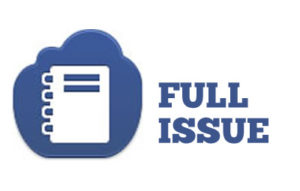 NEWS: S.C. communities begin adapting to climate change
NEWS: S.C. communities begin adapting to climate change
BRIEFS: White is out, Smith is in, Medicaid, voting machines, pre-filed bills
COMMENTARY, Brack: No halfway needed on tax reform
SPOTLIGHT: Children’s Trust of South Carolina
MY TURN, Felkel: A life well-lived
FEEDBACK: Send us your thoughts
MYSTERY PHOTO: Cool and modern, what where?
S.C. ENCYCLOPEDIA: Blacksmith Philip Simmons
NEWS: S.C. communities begin adapting to climate change
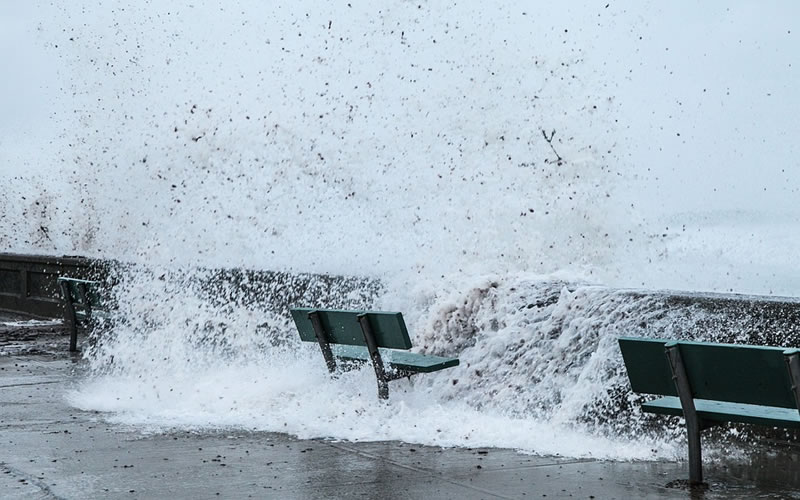
By Lindsay Street, Statehouse correspondent | Measures aimed at adapting to climate change are already being implemented in communities around the state, especially along the coast, as South Carolina is experiencing rising seas, stronger storms and increased precipitation.
Much of the work is being spearheaded by cities such as Charleston, Beaufort and Columbia, where mayors and local elected leaders are experiencing the first-hand effects of sea-level rise and climate change.
However, local issues are prompting even conservative lawmakers to act, despite the S.C. General Assembly having failed to pass any major bills to address climate change.

“(Climate change) exists and we need to get a handle on it,” Republican S.C. Sen. Sandy Senn of Charleston told Statehouse Report. “Are we going to stick our heads in the sand until it’s undeniable and we’ve lost opportunities to get ahead of the game?”
Senn heads a task force among her coastal delegation that seeks to help residents with flooding issues by working with local agencies.
‘Where the rubber hits the road’
A U.S. Conference of Mayors survey found 57 percent of responding municipalities nationwide are planning actions tied to climate change and 95 percent of respondents said they are experiencing the effects of climate change.
“Mayors and city councils are where the rubber hits the road,” Beaufort Mayor Billy Keyserling said. “Washington can make a policy but they don’t see what it’s like when a king tide hits the sea wall.”
Columbia Mayor Stephen Benjamin is president of the U.S. Conference of Mayors, which has made climate change a priority. He made headlines this fall when he was scheduled to talk about climate change in San Francisco but had to return home to deal with Hurricane Florence preparations.
“We in the Carolinas are forced to deal with the realities of climate change every single day,” Benjamin told USA Today in September.
Worsening conditions predicted
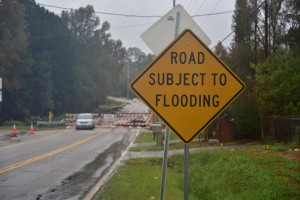
Last week, the fourth installment of the National Climate Assessment was released. The report focuses on impacts, risks and adaptation in the United States. In the chapter dedicated to the Southeast, the assessment found:
- The number of extreme rainfall events is increasing, and this will likely continue to increase in future conditions. This could impact transportation of people and goods, water quality, and further endanger people and property;
- Sea level rise has contributed to ongoing flooding in coastal areas and made flooding worse when storms arise. This trend is expected to continue with more “sunny day” flooding days predicted in the future; and,
- Cities across the Southeast are experiencing more and longer summer heat waves, and this trend is expected to continue. The Southeast is also seeing extended periods between freezes.
The assessment dedicates a chapter to community adaptation strategies:
“For instance, Miami-Dade County’s Capital Improvement Program is addressing hazards related to sea level rise, as is San Francisco’s 2015 Seawall Resiliency Project. It remains difficult, however, to tally the extent of adaptation implementation in the United States because there are no common reporting systems, and many actions that reduce climate risk are not labeled as climate adaptation.”
Reactive, proactive strategies
University of South Carolina geography professor Kristin Dow helped draft the Southeast chapter in the assessment. Last week, Dow spoke about the report.
“There’s a case to be made for investing in resilience, you often get a good return on those dollars, reducing hazard impacts,” Dow said in the presentation.
In the Lowcountry, the Coastal Conservation League is working with local governments on addressing resiliency. Communities and Transportation Program Director Jason Crowley said many of those conversations are just beginning.
Former city of Charleston planning projects manager and current Conservation Voters of South Carolina Field Director Carolee Williams said communities “adapting to sea level rise and flooding is a good entry point (for climate change adaptation). It’s the beginning of understanding that there may be ways we can be less impactful.”
The city of Charleston has made headlines for its work on stormwater and flooding issues. City leaders have visited the Netherlands to study response to rising seas in a low-lying region. A 2016-approved tax is expected to raise $2 billion by 2030 to help the city respond to flooding. The city also has published a sea-level rise strategy in recent years.
The city of Charleston did not respond to a request seeking comment for this story.
Beaufort has committed $16 million toward improving its stormwater system. Keyserling said the efforts began as a citizens group working to educate the public.
“Once it became time to start investing we had gotten to the point where people understood that the stormwater issue is tied to the rising sea level,” he said.
He called climate change “the single largest infrastructure question the country is going to face in quite a while.”
Williams called the city of Columbia the “poster child” for responding to climate change through mitigation efforts. The city launched its Climate Protection Action Campaign in 2006, which seeks to improve the environment through water conservation, energy conservation, air quality and recycling and waste reduction.
She also said Columbia is being proactive rather than reactive. The city of Columbia responded to interview requests but failed to make any person available for comment prior to deadline for this story.
“They’re looking at every opportunity for making a difference,” Williams said.
Other proactive steps have come in with land-use policies, according to Crowley at the Coastal Conservation League. He cited Folly Beach and Kiawah Island as municipalities that have developed resiliency plans aimed at taking advantage of green infrastructure to help weather rising seas. Crowley called greenspace like swamps and marshes were sponges that can help absorb excess water.
Experts also have listed the recent surge in single-use plastics and Styrofoam bans among coastal municipalities and the strong coastal opposition to offshore drilling as other proactive steps to mitigating further climate change.
Crowley said one of the most important steps municipalities can take is not allowing development in low-lying areas.
“Local governments need to stop allowing people to build in vulnerable areas that flood,” he said.
State-level work
The Coastal Conservation League is working with lawmakers to bring about new pieces of legislation that deal with development in low-lying areas, as highlighted in this September story by Statehouse Report.
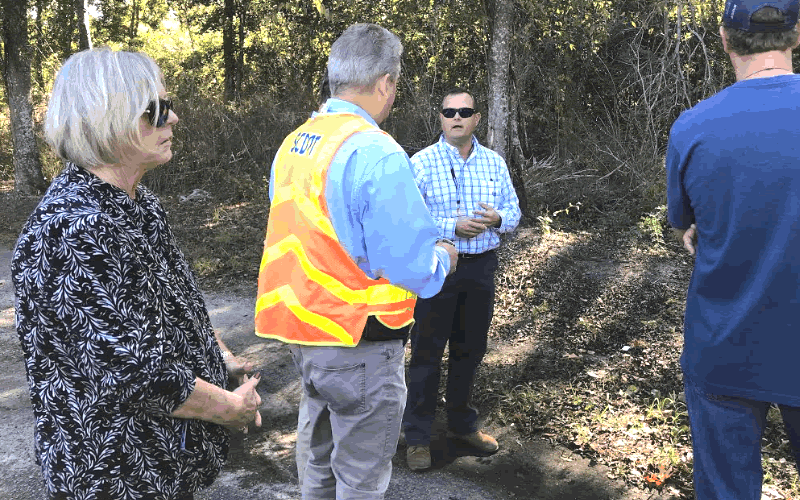
While municipalities are spending and planning for climate change, Senn said the flooding task force is working to make sure existing dollars and infrastructure are working optimally.
The goal is to do neighborhood walk-throughs with all local government agencies involved to address flooding concerns. That way, no entity can blame another entity for a problem, Senn said.
While the work is aimed at working within existing budgets, Senn said she will work to secure disaster funding for the program from the state. She said she wants $154 million of Hurricane Michael money to go toward fixing flooding issues around Medical University of South Carolina in downtown Charleston.
The task force neighborhood walk-through began on James Island and is now countywide in Charleston. Senn said she hopes to take the model across the tri-county region.
Additionally, experts said this coming legislative session could help the state further mitigate climate change through focusing on transportation, removing the two-percent cap on solar energy, and include conservationist voices for water resources in the state’s water-use plan.
- Have a comment? Send to: feedback@statehousereport.com
NEWS BRIEFS
BRIEFS: White is out, Smith is in, Medicaid, voting machines, pre-filed bills
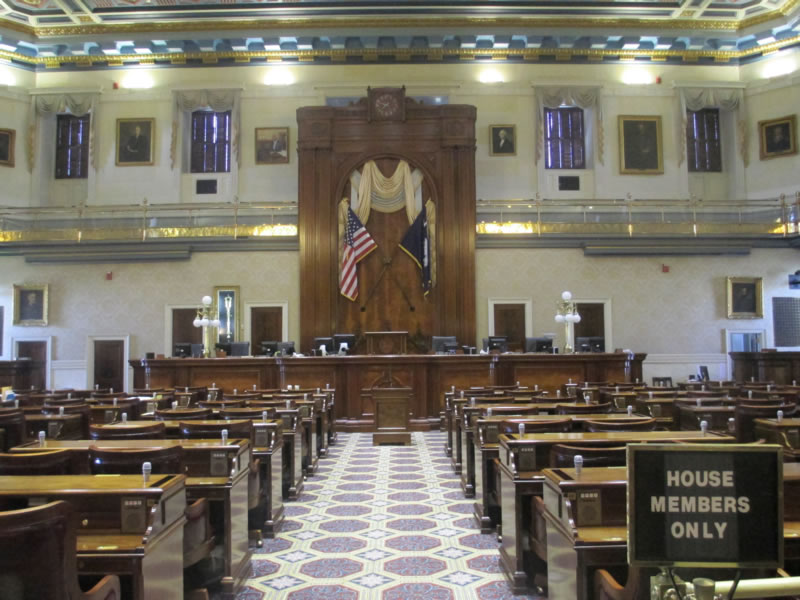
By Lindsay Street, Statehouse correspondent | The House of Representatives has a new head budget writer after longtime Ways and Means Committee Chair Brian White, R-Anderson, was ousted from the position by Speaker Jay Lucas this week.

In his place, the committee has elected Sumter Republican Murrell Smith to chair the powerful budget-writing committee.
While media reported Lucas said the move wasn’t personal and way a way of getting renewed perspective on the committee, Orangeburg Democrat Gilda Cobb Hunter threw some shade this week with this quote to The State:
“It pays to be nice. People should remember that the same people you meet on your way up are the same people you’ll meet on your way down.”
In other recent news:
Pre-filed legislation. State senators will pre-file 2018 bills on Dec. 12 and we’ll have a summary of the most important pieces of legislation as we roll out the 2019 version of our Tally Sheet. Six days later, House members will pre-file bills.
- Click here on Dec. 12 to see pre-filed Senate bills.
- Click here on Dec. 18 to see pre-filed House bills.
Work for care access. The S.C. Department of Health and Human Services has officially submitted its Medicaid community engagement waiver application, which would require most recipients to prove they are employed to receive benefits. Read the waiver application.
Medicaid requests more funds. S.C. Department of Health and Human Services also this week drafted its 2019-2020 fiscal year budget, which included requests for $165 million in new funds. The budget request includes $21 million more in rate increases and $54 million for the state’s new Medicaid Management Information System. Read the proposed budget.
Voting machine bids. The state election office told Statehouse Report this week that a request for proposals on new voting machines for the state has not yet been released. However, office spokesman Chris Whitmire said the goal is to complete procurement and implementation of the machines by January 2020 — just in time for the first-in-the-South presidential primary, which was held in February in 2016.
Looking ahead
Click below for other items coming up in the Statehouse:
- House calendar
- Senate calendar
- Have a comment? Send to: feedback@statehousereport.com
BRACK: No halfway needed on tax reform

By Andy Brack, editor and publisher | The newly-found political buzzphrase among the South Carolina legislative class is “tax reform.”
 Suddenly, after years of hemming and hawing about doing something about the hodge-podge of laws that make up the state’s tax code, there’s a little juice to do something real to stabilize the tax structure and, we hope, make it a little bit fairer up and down the line.
Suddenly, after years of hemming and hawing about doing something about the hodge-podge of laws that make up the state’s tax code, there’s a little juice to do something real to stabilize the tax structure and, we hope, make it a little bit fairer up and down the line.
There’s a glimmer of hope for the hard work of changing and updating the tax structure thanks to a new 129-page report commissioned by the S.C. Chamber Foundation and done by the Tax Foundation, a national research group. This new Roadmap to Tax Reform describes the complications and sheer bulkiness of how the state of South Carolina levies taxes. For example:
On the state income tax: It “features the highest top marginal rate in the Southeast, and the highest effective rates in the region for many wage earners.”
On sales taxes: They are “imposed on an extremely narrow base that exempts many goods and most services, a holdover from an earlier era.”
On property taxes: “Act 388 remade the property tax landscape in South Carolina – and not in an entirely positive way. The exceedingly light taxation of some classes of property has resulted in heavy, uncompetitive burdens on others.”
On user fees and more: “A robust, and often byzantine, system of fees in lieu of taxes has emerged to offset an otherwise deeply uncompetitive property tax system for many businesses. Meanwhile, local governments choose among a bevy of tourism- and accommodation-related taxes, each with their own structures.”
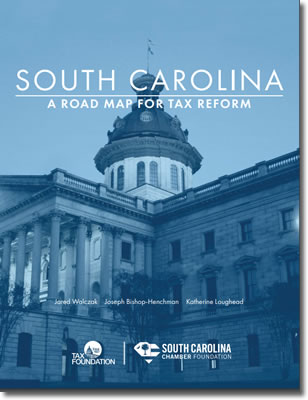 In other words, the way the state of South Carolina taxes is a big hot mess. It got that way because lawmakers of the past tried to patch, repatch and cover over a structure that was weak and needed to be modernized. Why didn’t they just fix it with something better? Because that’s hard work. Comprehensive tax reform has a lot of moving pieces and for it to be done right, there’s got to be a lot of balance and compromise, two values that aren’t found much these days in the political arena.
In other words, the way the state of South Carolina taxes is a big hot mess. It got that way because lawmakers of the past tried to patch, repatch and cover over a structure that was weak and needed to be modernized. Why didn’t they just fix it with something better? Because that’s hard work. Comprehensive tax reform has a lot of moving pieces and for it to be done right, there’s got to be a lot of balance and compromise, two values that aren’t found much these days in the political arena.
The Tax Foundation report suggests the impetus to reform the tax code is to make South Carolina more competitive with other states because the current system makes us lag in more ways than one: “Underlying our analysis is the goal of enhancing South Carolina’s competitive standing and a commitment to the principles of sound tax policy – that, to the greatest extent possible, taxes should be simple, transparent, neutral and stable, and that the best tax structures are those with broad bases and low rates.”
We’ve been pushing those basic economic principles for a dozen years since the 2006 publication of Doing Better: Progressive Tax Reform for the American South by the Center for a Better South.
So here’s the practical problem in South Carolina: Can tax reform be done in a way that can be fair but also generate enough revenue to deal with decades of underfunding that caused some of the worst public schools in the country, public colleges with high tuition, crumbling roads, unsafe bridges, health problems that are among the nation’s worst, and on and on?
Tax reform, if it is real, can’t just mean a rejiggering of the state’s tax structure to make it revenue-neutral. An updated tax structure needs to fuel more investment so we can get out of the hole in education, roads and health care. In turn, that will make us more competitive over the long term. Having high quality education, roads and health care is why people will move here. Merely rearranging the tax chairs on the deck of the Titanic without investing more to make us greater will do little to push South Carolina forward.
We applaud the Chamber and Tax Foundation for their hard work to engage legislators in what will be tough discussions and hard decisions. But if we want real and comprehensive tax reform to make the Palmetto State truly competitive, a new tax structure must be simple and fair to all – but also generate more money to make up for what was not done right for decades.
- Have a comment? Send to: feedback@statehousereport.com.
SPOTLIGHT: Children’s Trust of South Carolina
 The public spiritedness of our underwriters allows us to bring Statehouse Report to you at no cost. This week’s spotlighted underwriter is the Children’s Trust of South Carolina, the only statewide organization that works to strengthen families and lead communities to prevent child abuse, neglect and injuries in South Carolina. The organization trains and educates professionals who work directly with families and also funds, supports and monitors proven prevention programs. Children’s Trust is the voice for South Carolina’s children and advocates for strong, well-founded policies that positively impact child well-being. Children’s Trust is home to Prevent Child Abuse South Carolina, KIDS COUNT South Carolina and Safe Kids South Carolina. The Children’s Trust helps to:
The public spiritedness of our underwriters allows us to bring Statehouse Report to you at no cost. This week’s spotlighted underwriter is the Children’s Trust of South Carolina, the only statewide organization that works to strengthen families and lead communities to prevent child abuse, neglect and injuries in South Carolina. The organization trains and educates professionals who work directly with families and also funds, supports and monitors proven prevention programs. Children’s Trust is the voice for South Carolina’s children and advocates for strong, well-founded policies that positively impact child well-being. Children’s Trust is home to Prevent Child Abuse South Carolina, KIDS COUNT South Carolina and Safe Kids South Carolina. The Children’s Trust helps to:
- Research resources: https://scchildren.org/research/
- Advocate: https://scchildren.org/advocate/
- Local partners: https://scchildren.org/local-partners/
MY TURN, Felkel: A life well-lived
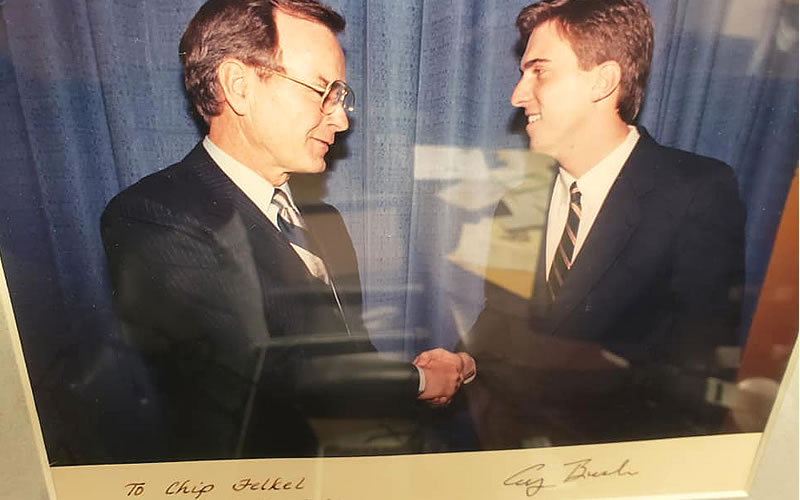
“I take as my guide the hope of a saint: In crucial things, unity; in important things, diversity; in all things, generosity. America today is a proud, free nation, decent and civil, a place we cannot help but love.”
– President George H.W. Bush.
By Chip Felkel, special to Statehouse Report | One of my heroes is gone and hopefully not the ambition, desire and commitment to see our country through this lens.

A text early last Saturday from an old friend (a loyal Democrat who understands it’s not about partisanship, it is about people) informed me that President George H.W. Bush had died. It was no real shock or surprise. He was, after all, 94, and just like my own parents who shared a long loving marriage, he was likely to soon follow his beloved Barb.
And yet, I found myself truly heartbroken. Yes, for me and certainly for his family. But I was much more heartbroken for the entire country. Our 41st president epitomized “public service.” He provided us all with such a fantastic example of what it means to be a true leader. He was an incredible inspiration as a father, husband and grandfather as evidenced by the love and affection of his family. But he also showed grit and determination to serve and to succeed in the oil business in Texas, as head of the CIA, the Republican National Committee, as ambassador to China and the United Nations, as vice president and of course, as the president of the United States.
This week, through the passing of this true American leader and statesman, we have been blessed to be reminded of how our public discourse and politics should, could, and still can be. But only if we demand it.
The outpouring of tributes provided many younger citizens with a history lesson and all of us with an example of a life well-lived. George Herbert Walker Bush was about duty, honor, commitment and loyalty, while also staying humble and occasionally self-deprecating, even when lesser men would have allowed their egos to lead, rather than their heads.
His unquestionable and steadfast commitment to his country and to “doing the right thing”, allowed him to see the greater good in others and their intentions, to work with political foes to achieve big things, to build important coalitions around the world and to make hard decisions that he accepted would undoubtedly affect him directly. He was far from perfect. He made mistakes. But his intentions were never questioned.
When I joined his campaign in 1987, I could never have known just how much he would impact my life professionally and personally. At 22, I was tasked with initially establishing the statewide organization here in South Carolina for “George Bush for President” after serving on Carroll Campbell’s successful race for governor. Later, I served as executive director of Bush-Quayle Georgia for 1988 general election. It was the first state called for “41” on election night and is one of my proudest moments.
I am not objective here. I admit it. But I believe we have suffered a tremendous loss, one that many may not fully appreciate or understand. I sincerely hope and pray that all citizens will listen to these stories, reread the beautiful eulogies that were delivered and know not only that he was a truly great man, but that he was the kind of man we really want and need to be our leader. In short, I want us all to acknowledge just how fortunate we were to have this man serve as POTUS.
Character. Faithfulness. Loyalty. Service. That was 41. I have many fond memories. I burst with immense pride to have played a small role in his incredible, impactful, important life. And, I believe we all should strive to follow his example: Live life to the fullest, do the right thing, be loyal and serve others with honor. God bless you, Mr. President and the Bush family. God blessed us with your presence.
Chip Felkel, founder of The Felkel Group in Greenville, operates the RAP Index to help organizations uncover key relationships.
- Have a comment? Send to: feedback@statehousereport.com..
FEEDBACK
FEEDBACK: Send us your thoughts … or rants
We love hearing from our readers and encourage you to share your opinions. But you’ve got to provide us with contact information so we can verify your letters. Letters to the editor are published weekly. We reserve the right to edit for length and clarity. Comments are limited to 250 words or less. Please include your name and contact information.
- Send your letters or comments to: feedback@statehousereport.com
MYSTERY PHOTO: Cool and modern, what where?
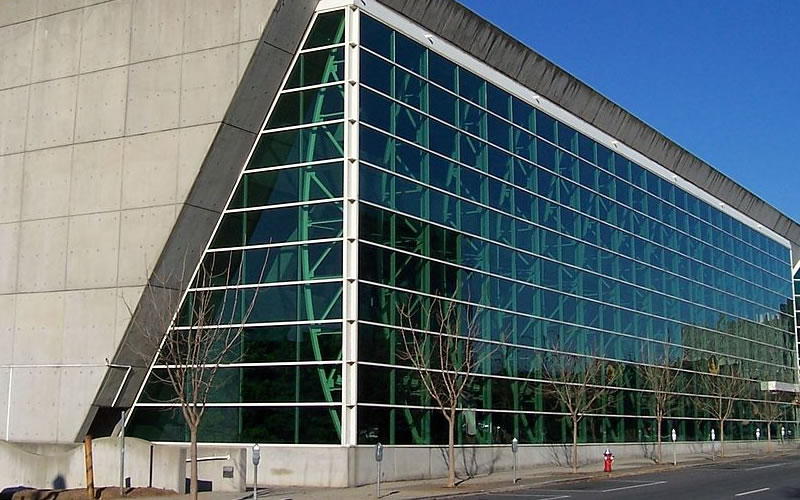
If you like modern architecture as much as we do, this building in South Carolina should be on your “must visit” list. What and where is it? Send your guess to feedback@statehousereport.com. And don’t forget to include your name and the town in which you live.
Our previous Mystery Photo
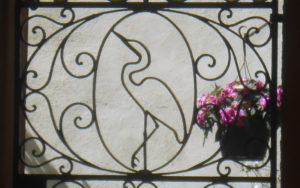 Our Nov. 30 mystery, “Tell us more about this photo,” was pretty easy, some people told us. That’s fine – sometimes they need to be on the easier side just to encourage entries!
Our Nov. 30 mystery, “Tell us more about this photo,” was pretty easy, some people told us. That’s fine – sometimes they need to be on the easier side just to encourage entries!
Congratulations to those who identified the metal egret figure as part of blacksmith Philip Simmons’ Egret Gate on St. Michael’s Alley in Charleston: Barry Wingard of Florence; Jay Altman of Columbia; Addison Ingle of Charleston; Dale Rhodes of Richmond, Va.; Philip Cromer of Beaufort; Lexie Chatham of West Columbia; Tray Hunter of Bluffton; Wayne Beam of North Myrtle Beach; George Graf of Palmyra, Va.; David Lupo of Mount Pleasant; Dwight McInvaill of Pawleys Island; and Faith Line of Anderson.
Chatham added, “This gorgeous iron gate is the work of Lowcountry blacksmith Philip Simmons. One of my greatest regrets is not interviewing him before his death in 2009. You can see an example of his work at this the S.C. State Museum.”
McInvaill also noted: “Mr. Simmons received the following honors: a National Heritage Fellowship from the NEA (1982), SC Hall of Fame Award (1994), and the Order of the Palmetto (1998). The scholar John Michael Vlach also wrote an excellent book on him.”
Graf added some context: “Simmons was an American artisan and blacksmith specializing in the craft of ironwork. Simmons spent 78 years as a blacksmith, focusing on decorative iron work. When he began his career, blacksmiths in Charleston made practical, everyday household objects, such as horseshoes. By the time he retired 77 years later, the craft was considered an art form rather than a practical profession.
Examples of Simmons’ work, including iron gates, can be seen throughout the city of Charleston, South Carolina, as well as the rest of South Carolina Lowcountry. His pieces are displayed at the Smithsonian Museum, South Carolina State Museum, and even Paris, France, and China.” For more on Simmons and his life, check out his entry in the S.C. Encyclopedia (below).
Send us a mystery: If you have a photo that you believe will stump readers, send it along (but make sure to tell us what it is because it may stump us too!) Send to: feedback@statehousereport.com and mark it as a photo submission. Thanks.
S.C. ENCYCLOPEDIA
HISTORY: Blacksmith Philip Simmons
S.C. Encyclopedia | Born on June 9, 1912, on Daniel Island in a Gullah-speaking community just a few miles from Charleston, legendary blacksmith Philip Simmons moved to the port city in 1925. He soon apprenticed himself to an elderly African American wheelwright named Peter Simmons (no relation), a man who was born in slavery on a plantation near St. Stephen and whose father and grandfather had also worked as blacksmiths.
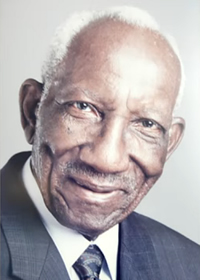 Under Peter’s watchful eye Philip would initiate an illustrious career. From Peter the thirteen-year-old apprentice was exposed to so many branches of ironworking that Philip Simmons would later describe himself as a “general blacksmith” since he could shoe horses, repair wagons, fashion iron fittings for boats, make and mend tools, and fabricate structural iron for buildings. When motorized trucks began to replace the horses and wagons that were mainstays of his business, he began to try his hand at making decorative wrought-iron gates and balconies. He quickly found that he could do that sort of work since he “could mash out a leaf the same as a horseshoe.” Shifting from the pragmatic to the artistic branch of blacksmithing, Philip Simmons would establish himself as an artistic force in Charleston.
Under Peter’s watchful eye Philip would initiate an illustrious career. From Peter the thirteen-year-old apprentice was exposed to so many branches of ironworking that Philip Simmons would later describe himself as a “general blacksmith” since he could shoe horses, repair wagons, fashion iron fittings for boats, make and mend tools, and fabricate structural iron for buildings. When motorized trucks began to replace the horses and wagons that were mainstays of his business, he began to try his hand at making decorative wrought-iron gates and balconies. He quickly found that he could do that sort of work since he “could mash out a leaf the same as a horseshoe.” Shifting from the pragmatic to the artistic branch of blacksmithing, Philip Simmons would establish himself as an artistic force in Charleston.
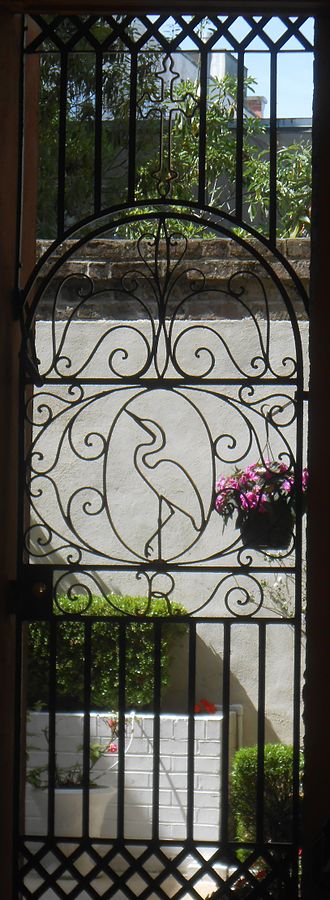 Simmons’s most elaborate ironworks were created for homes in the celebrated Battery District near the harbor. Between 1938 and 1990 he produced more than two hundred commissions, which included gates, fences, railings, and balconies. Among the most visible of his works are the gates made for the Christopher Gadsden House on East Bay Street, which feature a pair of threatening rattlesnakes that commemorate Gadsden’s “Don’t Tread on Me” flag designed during the Revolutionary War.
Simmons’s most elaborate ironworks were created for homes in the celebrated Battery District near the harbor. Between 1938 and 1990 he produced more than two hundred commissions, which included gates, fences, railings, and balconies. Among the most visible of his works are the gates made for the Christopher Gadsden House on East Bay Street, which feature a pair of threatening rattlesnakes that commemorate Gadsden’s “Don’t Tread on Me” flag designed during the Revolutionary War.
Coming to the notice of the Smithsonian Institution in 1976, Simmons was invited to demonstrate his skills at the Festival of American Folklife held on the Mall in Washington, D.C. There, at the foot of the Lincoln Memorial, he crafted a gate filled with a variety of images intended to show the range of his abilities. This work came to be known as the “Star and Fish” gate and was acquired by the National Museum of American History in 1982. This was the same year that the National Endowment for the Arts began to recognize and honor American folk artists with the title of National Heritage Fellow. As a member of the initial class of Fellows, Simmons was widely lauded, and he began to receive commissions from various museums.
The work that will probably stand as his masterpiece is a gate created in 1987 for the South Carolina State Museum in Columbia. It features two large egrets surrounded by numerous scrolls and is topped with an image of a palmetto tree. While Simmons was fashioning this gate he often referred to it as “the gate for the state,” but after it was installed, the museum chose to honor its creator by naming it “The Philip Simmons Gate” and placing it at the entrance to the history galleries.
While he turned his shop over to his former apprentices, Simmons continued to design decorative pieces and receive accolades into the twenty-first century. In addition to his induction into the South Carolina Hall of Fame and a lifetime achievement award from the state for his efforts in historic preservation, he has had a public garden, two parks, and the blacksmithing studio in the School for the Building Arts named for him. Simmons died on June 22, 2009.
- Click here to learn about the Philip Simmons Foundation.
— Excerpted from an entry by John Michael Vlach. This entry hasn’t been updated since 2006. To read more about this or 2,000 other entries about South Carolina, check out The South Carolina Encyclopedia, published in 2006 by USC Press. (Information used by permission.)
ABOUT STATEHOUSE REPORT
Statehouse Report, founded in 2001 as a weekly legislative forecast that informs readers about what is going to happen in South Carolina politics and policy, is provided to you at no charge every Friday.
- Editor and publisher: Andy Brack, 843.670.3996
- Statehouse correspondent: Lindsay Street
More
- Mailing address: Send inquiries by mail to: P.O. Box 22261, Charleston, SC 29407
- Subscriptions are free: Click to subscribe.
- We hope you’ll keep receiving the great news and information from Statehouse Report, but if you need to unsubscribe, go to the bottom of the weekly email issue and follow the instructions.
- © 2018, Statehouse Report. All rights reserved.
















 We Can Do Better, South Carolina!
We Can Do Better, South Carolina!